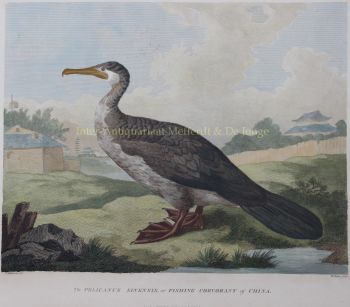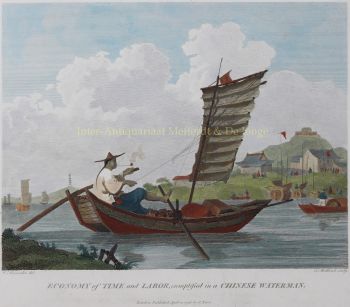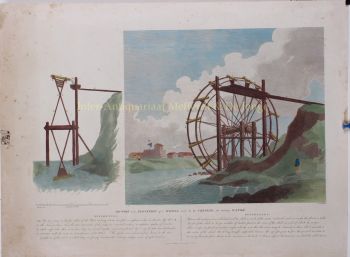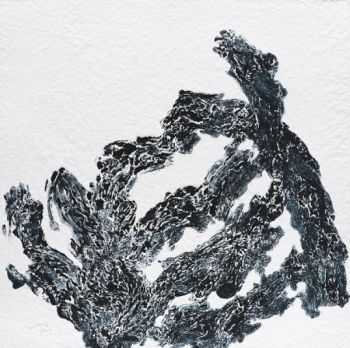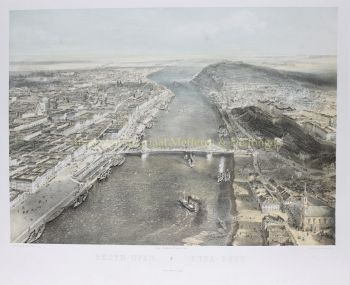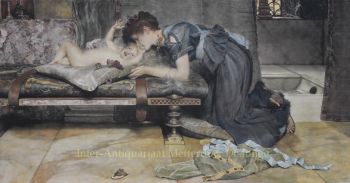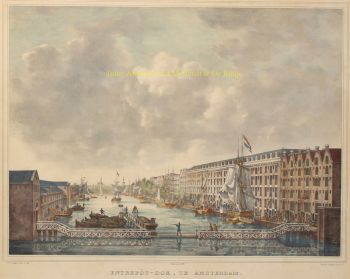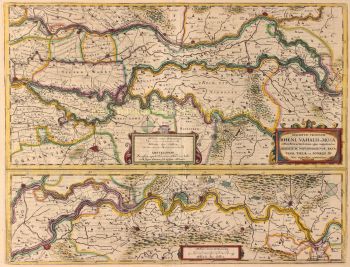China, rio Yangtze após William Alexander 1796
William Alexander
€ 395
Inter-Antiquariaat Mefferdt & De Jonge
- Sobre arte“View of the Tchin-Shan, or Golden Island in the Yang-Tse-Kiang, or Great River of China” Copper engraving by William Wilson after a drawing by William Alexander (1767-1816 ) from the “Authentic account of an embassy from the King of Great Britain to the Emperor of China; including cursory observations made, and information obtained, in travelling through that ancient empire” written by Sir George Leonard Staunton and published April 12, 1796 in London by G. Nicol. Coloured by a later hand. Size (image): 30,4 x 45,6 cm. The embassy was headed by Earl George Macartney (1737-1806), who was dispatched to Beijing in 1792. He was accompanied by Staunton a medical doctor as his secretary, and a retinue of suitably impressive size, including Staunton’s 11-year-old son who was nominally the ambassador’s page. On the embassy’s arrival in China it emerged that the 11-year-old was the only European member of the embassy able to speak Mandarin, and thus the only one able to converse with the Emperor. Lord Macartney's embassy was unsuccessful, the Chinese resisting British overtures to establish diplomatic relations in view of opening the vast Chinese realms to free trade, but it opened the way for future British missions, which would eventually lead to the first Opium War and the cession of Hong Kong to Britain in 1842. It also resulted in this invaluable account, prepared at government expense, largely from Lord Macartney's notes, by Staunton, of Chinese manners, customs and artifacts at the height of the Qing dynasty. The engravings are of special interest because of their depiction of subjects that very few Europeans had heard of or seen, showing how advanced Chinese civilisation was on a technical, artistic and organizational level. Staunton describes the scene on the Yangtze river as follows: "In crossing the river the attention was particularly at-tracted by an island situated in the middle of the river, called Chin-shan, or the golden mountain, which rose almost perpendicularly out of the river, and is interspersed with gardens and pleasure-houses. Art and nature seemed to have combined to give to this spot the appearance of enchantment. It belonged to the Emperor, who had built upon it a large and handsome palace, and on the highest eminence several temples and pagodas. The island also contained a large monastery of priests, by whom it is chiefly inhabited. A vast variety of vessels were moving on this large river. On the left hand side of the print is an accurate delineation of a Chinese ship of war." Price: Euro 395,-
Você está interessado em comprar esta obra de arte?
Artwork details
Related artworks
- 1 - 4 / 12
- 1 - 4 / 24
Cornelis Anthonisz Theunissen
MUITO RARO PRIMEIRO MAPA IMPRESSO DE AMESTERDÃO, UMA CIDADE EM ASCENSÃO1544
€ 175.000Inter-Antiquariaat Mefferdt & De Jonge
 Com curadoria de
Com curadoria deDanny Bree
1 - 4 / 12





